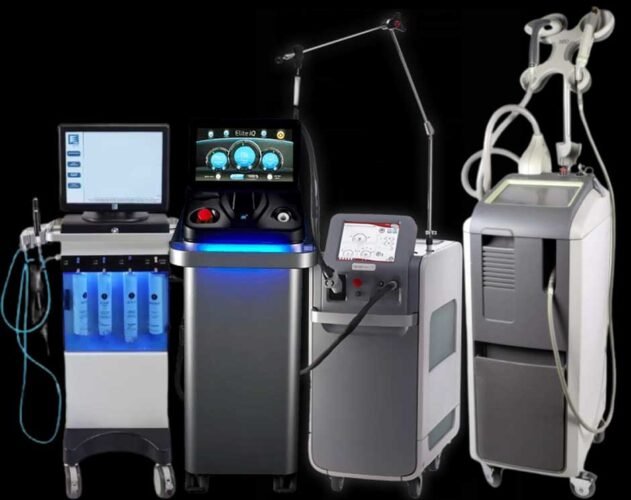Safety is a top priority in any industrial, commercial, or laboratory environment, where employees are frequently exposed to hazardous chemicals, contaminants, or extreme temperatures. An essential component of an effective safety plan is the emergency shower station, designed to provide immediate decontamination to minimize injury and prevent long-term health effects in the event of chemical spills, burns, or exposure to harmful substances.
An emergency shower station delivers a high-volume flow of water to flush away hazardous chemicals, contaminants, or irritants from the skin and eyes. It is a critical first aid measure that can significantly reduce the severity of injuries and improve the chances of recovery. Integrating emergency shower stations into your facility’s safety plan is not just about compliance with safety regulations; it’s about protecting your workforce and ensuring a safe working environment.
In this comprehensive guide, we’ll explore the importance of emergency shower stations, regulatory requirements, types of emergency showers, best installation practices, maintenance guidelines, and training essentials to ensure that your facility is prepared for any emergency.
Why Emergency Shower Stations Are Essential
An emergency shower station is a safety fixture that provides a continuous flow of water to quickly rinse off harmful chemicals, contaminants, or thermal burns from the body and eyes. It is designed to be used immediately after exposure to hazardous substances, reducing the risk of serious injury, chemical burns, and long-term health issues.
Key Benefits of Emergency Shower Stations:
- Immediate Decontamination:Emergency showers provide rapid flushing to remove hazardous chemicals and irritants from the skin and eyes, minimizing chemical absorption and damage.
- Prevents Serious Injuries:Quick rinsing helps reduce the severity of chemical burns, eye injuries, and skin irritation, preventing permanent damage.
- Compliance with Safety Standards:Installing emergency shower stations ensures compliance with OSHA, ANSI, and other safety regulations, reducing liability and legal risks.
- Enhanced Employee Safety and Confidence:Providing emergency shower stations creates a safer work environment, increasing employee confidence and productivity.
Regulatory Requirements and Compliance
To ensure workplace safety and compliance, emergency shower stations must adhere to specific safety standards and regulations. The primary standards governing emergency showers include:
1. OSHA (Occupational Safety and Health Administration) Requirements
Under OSHA regulations (29 CFR 1910.151), employers must provide suitable emergency equipment, including emergency shower stations, in workplaces where employees are exposed to hazardous chemicals or substances that could cause injury or illness.
- Key OSHA Requirements:
- Emergency shower stations must be readily accessible and located within a 10-second travel distance from hazardous areas.
- They must provide a continuous flow of water for at least 15 minutes.
- Shower units must be capable of delivering tepid water (60°F to 100°F) to prevent shock or hypothermia.
2. ANSI/ISEA Z358.1-2014 Standards
The American National Standards Institute (ANSI) and the International Safety Equipment Association (ISEA) provide detailed guidelines for the design, installation, and maintenance of emergency shower stations.
- Key ANSI Requirements:
- Emergency showers must deliver a minimum water flow of 20 gallons per minute (GPM) at 30 psi.
- Units must provide tepid water to ensure effective flushing without causing thermal shock.
- Shower activation valves must be easy to operate and remain open without requiring the user’s hands.
- Units must be accessible within 10 seconds (approximately 55 feet) from the hazard area and located on the same level.
3. ADA (Americans with Disabilities Act) Compliance
Emergency shower stations must be accessible to all employees, including those with disabilities. This includes ensuring clear access pathways and appropriately positioned activation handles for ease of use.
Types of Emergency Shower Stations
There are several types of emergency shower stations designed to meet specific safety needs and facility requirements. Understanding the different types helps you select the most appropriate units for your workplace.
1. Plumbed Emergency Shower Stations
Plumbed emergency showers are connected to the building’s water supply, providing a continuous flow of water for flushing. They are ideal for permanent installations in high-risk areas.
- Ideal For:
- Laboratories, chemical processing plants, manufacturing facilities, and industrial sites.
- Areas with access to a reliable water supply and drainage system.
- Advantages:
- Provides a consistent flow of water for at least 15 minutes.
- Can be integrated with other safety equipment, such as eyewash stations.
- Suitable for heavy-duty use and frequent testing.
- Design Tip:
- Install plumbed showers near high-risk areas, such as chemical storage rooms, laboratories, and mixing stations.
2. Portable Emergency Shower Stations
Portable emergency showers are self-contained units with built-in water tanks, making them suitable for remote locations or temporary worksites where plumbing is unavailable.
- Ideal For:
- Construction sites, remote worksites, and outdoor areas without a fixed water supply.
- Temporary installations during maintenance or renovation projects.
- Advantages:
- Easy to move and set up in different locations.
- Suitable for temporary worksites or areas undergoing construction.
- Can be filled with potable water or connected to an auxiliary water source.
- Design Tip:
- Choose portable units with large capacity tanks (15-30 gallons) to provide sufficient water flow for at least 15 minutes.
3. Combination Shower and Eyewash Stations
Combination units provide both body flushing and eye washing capabilities, offering comprehensive decontamination in a single station.
- Ideal For:
- Laboratories, chemical plants, and facilities handling corrosive or hazardous chemicals.
- Areas with high risks of chemical splashes, spills, or exposure to irritants.
- Advantages:
- Provides full-body and eye flushing in one unit for faster decontamination.
- Saves space by combining two safety functions in a single installation.
- Design Tip:
- Install combination units near chemical handling and storage areas for immediate access during emergencies.
4. Self-Contained Emergency Shower Stations
Self-contained emergency showers have built-in tanks and do not require plumbing connections, making them suitable for locations without water lines.
- Ideal For:
- Remote worksites, outdoor environments, and areas without plumbing access.
- Temporary or emergency setups.
- Advantages:
- Provides mobility and flexibility for placement in various locations.
- Suitable for environments with extreme temperatures using heated or insulated units.
- Design Tip:
- Use self-contained units with heated tanks for cold climates to maintain tepid water temperatures.
Installation Best Practices
Proper installation of emergency shower stations is critical for compliance and safety. Here are best practices to follow:
- Strategic Placement:
- Place units within 10 seconds or 55 feet from hazardous areas, ensuring unobstructed pathways.
- Install on the same level as the hazard to avoid stairs or obstacles.
- Water Temperature and Flow:
- Ensure a continuous flow of tepid water (60°F to 100°F) for at least 15 minutes.
- Maintain a minimum water flow of 20 GPM for showers and 0.4 GPM for eyewash units.
- Visibility and Signage:
- Clearly mark emergency shower locations with highly visible signage.
- Install illumination for visibility in low-light or emergency power outage situations.
- Activation and Accessibility:
- Equip units with hands-free activation valves that stay open without manual effort.
- Ensure ADA compliance by positioning activation handles within accessible reach.
Maintenance and Testing Guidelines
Regular maintenance and testing ensure that emergency shower stations remain functional and compliant with safety standards:
- Weekly Activation Tests:
- Conduct weekly activation tests to check water flow, temperature, and valve functionality.
- Ensure proper drainage to avoid water buildup.
- Annual Inspections:
- Perform annual inspections to verify compliance with ANSI and OSHA standards.
- Check for corrosion, leaks, or other damages.
- Cleaning and Sanitization:
- Clean and sanitize units regularly to prevent contamination.
- Replace water in portable and self-contained units to maintain freshness.
Building a Safer Workplace with Emergency Shower Stations
Integrating emergency shower stations into your facility’s safety plan is an essential step towards protecting your employees and ensuring a safe work environment. By selecting the right type of emergency shower station, installing it strategically, and maintaining it regularly, you enhance safety, compliance, and employee confidence.
Is your facility equipped for safety emergencies? Then start planning today to ensure maximum protection and preparedness for any workplace hazard.






